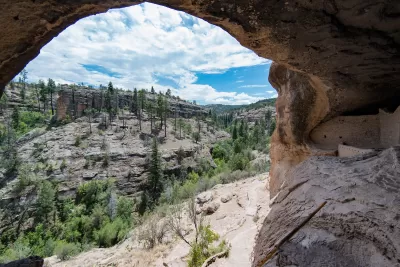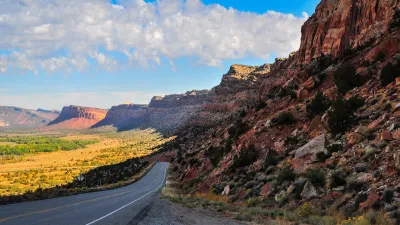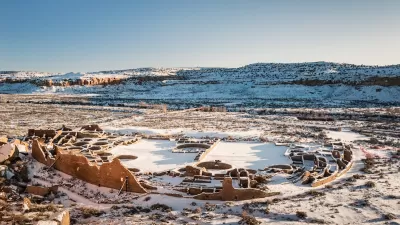U.S. public lands management is undergoing a slow but significant shift.

In an article for High Country News, Marissa Ortega-Welch describes the history of the 1964 federal Wilderness Act, “which required federal public land management agencies to consider large roadless areas for an extra level of protection — what some call ‘Big W’ wilderness,” and its relationship to the nation’s first protected wilderness, the Gila Wilderness, protected well before the Wilderness Act in 1924.
Today, many wilderness areas are under threat from a variety of sources. “More frequent, destructive fires and invasive species, both amplified by climate change, are arguably eroding its naturalness; more people, and more pinging smartphones, are making solitude harder to find. As our ideas about wilderness evolve, the landscapes designated as such are also changing in profound ways.”
Meanwhile, Indigenous Americans argue that these lands were not vacant and untouched. Ortega-Welch notes that designating the Gila Wilderness area for ‘protection’ also evicted thousands of Chiricahua-Warm Springs Apache who lived on the land and “utilized, changed, altered” it. Now, the U.S. government has begun to acknowledge the Indigenous history of ‘wilderness’ areas and, in some (very few) cases, restored land to native tribes or created co-management agreements. “In 2021, at Point Reyes National Seashore north of San Francisco, the National Park Service signed a co-stewardship agreement with the Federated Indians of Graton Rancheria, the tribal government of the Southern Pomo and Coast Miwok.”
FULL STORY: https://www.hcn.org/issues/56-6/as-the-gila-wilderness-turns-100-the-wilderness-act-is-still-a-living-law/

Alabama: Trump Terminates Settlements for Black Communities Harmed By Raw Sewage
Trump deemed the landmark civil rights agreement “illegal DEI and environmental justice policy.”

Study: Maui’s Plan to Convert Vacation Rentals to Long-Term Housing Could Cause Nearly $1 Billion Economic Loss
The plan would reduce visitor accommodation by 25% resulting in 1,900 jobs lost.

Why Should We Subsidize Public Transportation?
Many public transit agencies face financial stress due to rising costs, declining fare revenue, and declining subsidies. Transit advocates must provide a strong business case for increasing public transit funding.

Paris Bike Boom Leads to Steep Drop in Air Pollution
The French city’s air quality has improved dramatically in the past 20 years, coinciding with a growth in cycling.

Why Housing Costs More to Build in California Than in Texas
Hard costs like labor and materials combined with ‘soft’ costs such as permitting make building in the San Francisco Bay Area almost three times as costly as in Texas cities.

San Diego County Sees a Rise in Urban Coyotes
San Diego County experiences a rise in urban coyotes, as sightings become prevalent throughout its urban neighbourhoods and surrounding areas.
Urban Design for Planners 1: Software Tools
This six-course series explores essential urban design concepts using open source software and equips planners with the tools they need to participate fully in the urban design process.
Planning for Universal Design
Learn the tools for implementing Universal Design in planning regulations.
Smith Gee Studio
Alamo Area Metropolitan Planning Organization
City of Santa Clarita
Institute for Housing and Urban Development Studies (IHS)
City of Grandview
Harvard GSD Executive Education
Toledo-Lucas County Plan Commissions
Salt Lake City
NYU Wagner Graduate School of Public Service





























